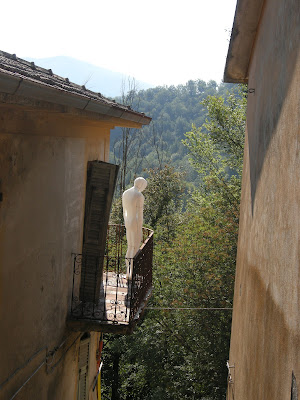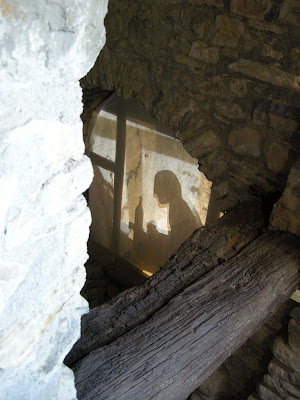Getting fingerprinted in Massa, Italy, is easy: you go to the immigration division of the local questura and place your digits, one at a time, on a little glass plate set into a special computer. Assisted by a nice policeman—in my case, a burly one from Naples—you roll each digit back and forth across the glass plate while the policeman presses delicately downward on each of your digits, making sure its whorls are captured by a camera hidden beneath the plate. On the computer’s screen (which the nice policeman pivots toward you, so you can see what’s going on), your identity appears like magic. There you are, reduced to five unique if unpretty blotches: your fingertips. (For good measure, your palms are printed, too.)
I was fingerprinted in Massa recently in order to obtain a “sojourn permit”: a piece of paper entitling me to stay in a given locale as the spouse of an Italian citizen, and to receive health-care benefits while in residence here. On line with my husband and myself were men, women, and children from all over the world, including a cute two-month-old whose Arab mother wore a headscarf, and a five-month-old in a fetching gingham pinafore whose Senegalese mother had quite the mouth on her. She wasted no time telling everyone how shameful it was that people with little kids had to remain standing for such a long time. “Each time you’re here, two hours! And you always have to return with more documents!” She had a point: there were no bathroom facilities, no drinking fountains, very little seating, and a line that began outdoors, snaking up a metal staircase into a tiny, airless anteroom. In winter it’d be no fun at all to have to come here.
Still, the two officials behind the plexiglass were quite courteous in discharging their bureaucratic duties. And most of the supplicants were respectful of one another, though a pair of Eastern European guys who tried to horn their way to the front of the line were rapidly exiled to the back by the Senegalese mother. (She also upbraided an Italian citizen who tried using “I’m an Italian citizen” as a way of expediting the red-tape process. “We’re all human beings here,” she said, “so don’t think you can get away with that!”)
The most intriguing foreigner was an Ecuadoran sculptor who works in marble. The nearby quarries in Carrara are world-famous: Michaelangelo got his materials there, and for over two millennia, beautifully veined and flecked stones have been taken from Carrara deposits. The Ecuadoran had been around Carrara marble for two decades, earning his keep from large firms as well as from individual commissions. He needed to sort out his visa issues before an upcoming work-trip to Turkey; he’d just returned from another trip to Lebanon. He told us about being hired by “the Pope,” which is to say, the Vatican—a commission that did a lot for his career, he asserted proudly.
Standing on the metal staircase in the warm sun, listening to the Ecuadoran’s lilting Italian, noting his chipped nails and rough hands, picturing him sitting in front of a block of marble and a bunch of tools, I tried to imagine what sort of sculpture this man might produce. Marble is cool, hard, and lovely. It’s also surprisingly domesticated. I envision countertops, chopping boards, and mortars, those old-fashioned devices (used with pestles) so useful for mashing garlic. But then the word mortars leads me to mortals, which in turn leads me to morte and muerta and Tod and dood and zgon and smart and all the other words for death in languages around the world. I think too, not cheerlessly, of tombstones. (Sometimes, said the Ecuadoran, people want doves with their angels, and sometimes not. That’s one way he makes his money—taking out the doves.)
On line at the questura in Massa, this sculptor was very far from his birthplace. Perhaps, on certain days when the light in this part of Tuscany is slanted, against all odds, just like that in Quito, Ecuador—a city almost at zero latitude, nearly in la mitad del mundo, the middle of the world—the sculptor begins mentally sketching something in marble, just for himself. Not an angel or dove; nothing to immortalize himself, or sanitize loss. Nor to suggest death’s permanence. This artist is, after all, very much in the middle of the world—a world thronging with impermanence, with people making their way up metal staircases and into crowded waiting-rooms in cities far from their homelands, hoping to sort out their so-called status and to give their infants a shot at something like stability, a safe sojourn. Perhaps the Ecuadoran has dreamed of making himself a marble flag: the flag of himself, one of “all human beings here,” which, thanks to his art, will seem to be wafting idly in the breeze, yet will in fact be grounded and steady. Proof of identity: like fingerprints, but ever so much lovelier.









